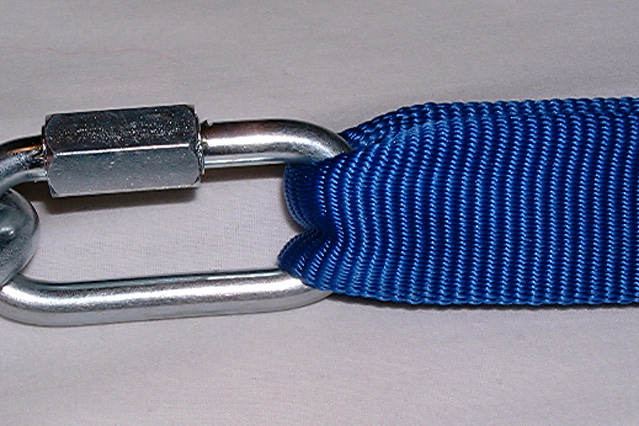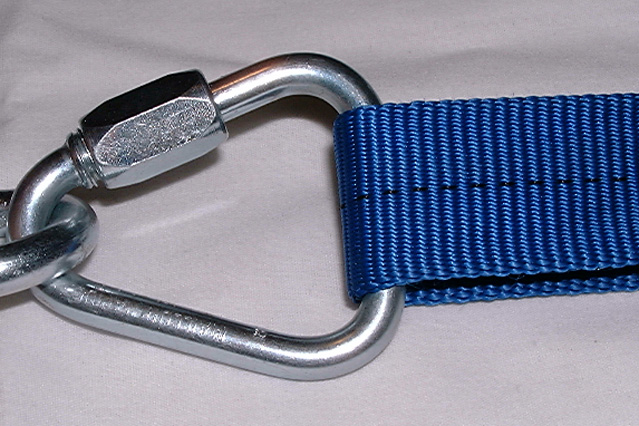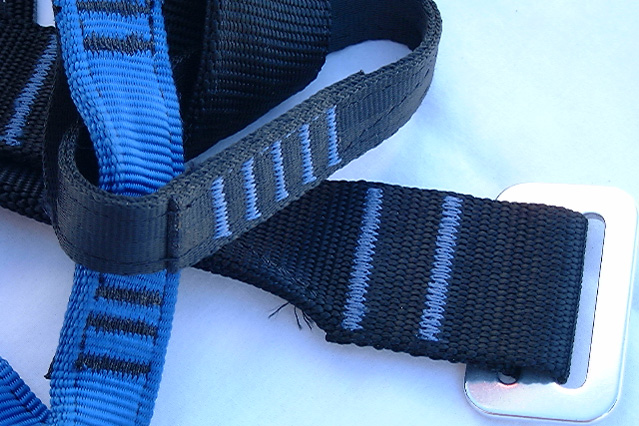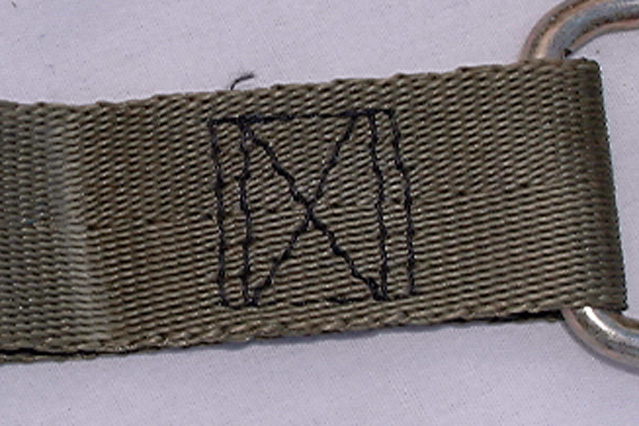Attachments
 |
Many methods are used in rocketry to attach recovery harnesses together. This article will cover four of the most common methods. Each one has benefits and drawbacks and only the reader can decide which method is best for him/her.
Oval Quick-Links
These commonly used pieces are found on almost every high power rocket that
takes flight. They work extremely well for attaching skinny pieces of
webbing or round cord to metal anchors (eyebolts or u-bolts) on your
rocket. The problem arises when wide (1" or larger) webbing is attached
with a quick-link. The quick-link will spin when loaded so that the anchor
is making contact at one of the ends. This bunches the webbing at the
other end (Fig. 1), weakening its strength. The significance of this
weakness must be evaluated by each individual on a case by case basis to
determine if it is worth concern.

Delta Shaped Quick-Links
While over twice the price as ovals, these triangle-shaped quick-links tend
to shift where the narrow end is touching the metal anchor, which, in turn,
puts the webbing in contact with a flat side (Fig. 2). This allows the
webbing to stay its normal width, which distributes the load more evenly
over the entire surface of the webbing. Another added benefit is the wider
design, which makes joining three different pieces easier.

Side-by-side comparrison of Oval and Delta Quick-Links with 1" webbing.

Knots
If tied properly, knots are a strong and reliable method of attachment.
There are many different knots, each having it's own specific use. Knots
add versatility in any recovery harness by having the advantage of being
able to untie and re-tie numerous times in any configuration.
Unfortunately, they also add weight and additional bulkiness to already
cramped payload compartments. Another drawback is that they weaken the
rope by nature of the sharp bends that form the knot (Table 1). For a rope
or webbing to not be weakened by a bend, the radius of the bend must be
five times the diameter of the rope. A good rule of thumb is to assume any
knot weakens the rope or webbing by 50%
Relative Strengths of Knots for Kernmantle Rope
Knot Strength % Knot Strength %
Without Knot 100 Double Fisherman's 65-70
Bowline 70-75 Water Knot 60-70
Figure 8 75-80 Clove Hitch 60-65
Fisherman's 60-65 Overhand 60-65
* Knots must have a tail longer than three inches.
Source: Mountaineering Freedom of the Hills 5th Ed., The Mountaineers, 1992
Sewing
This is the answer to reducing weight and bulk and improving the look of
your recovery harness. It does not really improve the strength of the
system, however, because you still have the webbing or rope bending over
whatever the loop is attached to (refer to above section). Webbing that is
professionally sewn is typically attached to itself with bar-tacks
(Fig. 3). Two bar-tacks are typically as strong as the material it is sewn
into, but most manufacturers sew three to five bar-tacks to assure safety.
Unfortunately, a special machine is needed to sew the bar-tacks. To avoid
the added cost of a bar-tack sewing machine, many rocket enthusiasts sew an
'X' in a box to join the webbing. However, this method should be
evaluated/tested before use.


Conclusion
No single method of attachment is the answer to every situation. A good
rule of thumb in designing any rocket recovery system is to assume any
knots or sharp bends, including sewn loops, in the rope or webbing weakens
it by 50%. Nonetheless, the requirements of each rocket recovery system
should be evaluated and the best method for that situation should be used.
Submitted by Bryan Flynt
